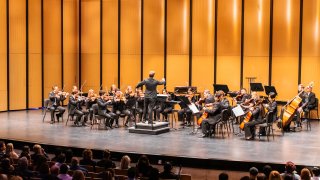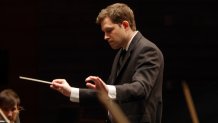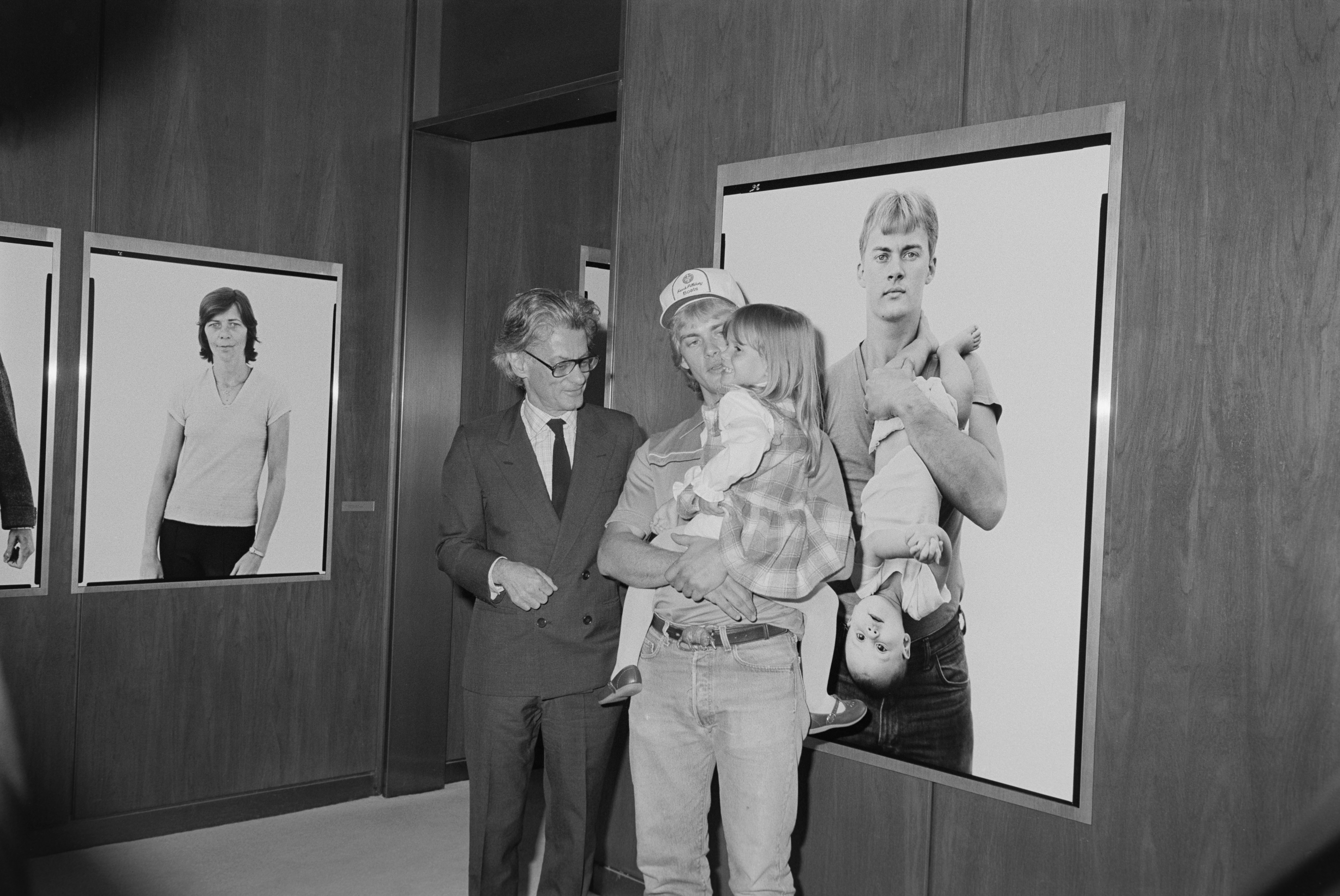
The Dallas Chamber Symphony’s third concert of the 2022-2023 season features Elgar, Vaughan Williams and Reinecke.
At the Dallas Chamber Symphony, it’s all about that bass – and violin, viola, and cello. The orchestra’s Feb. 21 concert at the Moody Performance Hall in the Dallas Arts District is designed to highlight and challenge the string sections.
The concert will consist of three works: Edward Elgar’s Introduction and Allegro, Ralph Vaughan Williams’ Five Variants of Dives and Lazarus, and Carl Reinecke’s Serenade for Strings. Last February’s concert featuring Vaughan Williams’ Fantasia on a Theme by Thomas Tallis inspired the centerpiece of this concert.
Watch NBC 5 free wherever you are
“People really seemed to enjoy the Tallis and that made us want to program more. And that’s why we were drawn to the Five Variants of Dives and Lazarus,” said Richard McKay, Dallas Chamber Symphony’s artistic director and conductor. “It is a piece that will really beautifully showcase the strings. It will familiarize our audience with some of the not-very-often performed English chamber orchestra repertoire.”
The piece is based on the folk tune “Dives and Lazarus” in Vaughan Williams’ English Folk Song Suite. The British Council commissioned Vaughan Williams to compose the piece for the 1939 World’s Fair in New York City. The work evokes the tale of the rich man and Lazarus.
Get top local stories in DFW delivered to you every morning with NBC DFW's News Headlines newsletter.
“He’s noteworthy for the time he spent traveling the English countryside, documenting English hymns. He’s really the first one to do it,” McKay said. “His body of work is itself an advocacy for that type of music, that kind of heritage.”

Before composing Five Variants of Dives and Lazarus, Vaughan Williams arranged the folk song into the hymn tune, “Kingsfold.” The hymn tune, named for the town in Sussex where Vaughan Williams heard it, first appeared in the English hymnal in 1906 as “I Heard the Voice of Jesus Say” and is still widely used in Protestant churches with a variety of lyrical settings.
The Scene
“Interestingly, Vaughan Williams was really an atheist, more of an agnostic towards the end of his life, but he often dabbled in religious themes for inspiration so there’s a very rich imagery to a lot of his works,” McKay said.
Besides hymns and other religious works, Vaughan Williams composed symphonies, choral music, and even stage works.
“Vaughan Williams, in my opinion, is one of those composers who the more you get to know his body of work, the more you really appreciate him as a composer. People very often don’t realize just how vast it is, how many symphonies he wrote, and how many different works from different genres he was able to produce. The symphonies are a very remarkable, colorful work of orchestration and themes. It’s very innovative. He was one of these composers who had a very unique sound and a very unique personality in his music,” McKay said.
Five Variants of Dives and Lazarus is paired with Elgar’s Introduction and Allegro to complete with the first half of the concert. Introduction and Allegro are similar to Vaughan Williams’ Fantasia on a Theme by Thomas Tallis in that it has an antiphonal sound.
“It’s noteworthy because it features a solo string quartet,” McKay said. “It’s separated from the rest of the orchestra so there are really these two ensembles at work.”
The piece also highlights Elgar’s compositional strength.
“There’s a naturalness to Elgar’s writing for strings. He’s a violinist so it fits the strings beautifully, very well. The string will feel that immediately when sitting down and playing it,” McKay said. “He’s at home when he’s writing for strings.”
The second half of the concert is reserved for Reinecke’s Serenade for Strings. Reinecke wrote nearly 300 works, but he is often overlooked. During his lifetime, he was influential as a pianist, composer, conductor, and teacher. Reinecke wrote nine Serenade for Strings. This work was completed in 1898.
“It’s his most popular, it’s his most often performed. I think it’s his best,” McKay said. “It’s well-written. It has drama to it.”
While the work is often performed by youth ensembles, McKay hopes the professional orchestra will bring out its artistic richness and surprise audiences.
“It’s romantic in sound,” McKay said. “They won’t know the Reinecke, but they will probably be impressed.”

McKay is using this program to develop the string sections, especially as the orchestra prepares for its May 23 concert featuring Beethoven’s Eroica.
“When we do take on projects, I want to take on projects that set the orchestra up to perform successfully and to experience types of music-making that can translate to other types of music-making,” McKay said.
This musical development is especially important as the orchestra adds new musicians to the ensemble.
“My attitude is one where we really want to focus on repertoire that lends itself well to fingers, gives us plenty to do artistically so that we can learn to make bold artistic choices together and execute on them readily, and to have a repertoire that will allow me to work closely with new players so that I can see how they do things, they can see how we do things and we can figure out how to best integrate them into future concerts, if at all, over time,” McKay said. “Every concert is an audition.”
The focus on the strings continues this summer with the orchestra’s Dallas International Competition. Typically, this event is a piano competition. This year, it will be a violin competition. Three finalists will compete for the top prize in a concert on June 20 at the Moody Performance Hall.
Learn more: Dallas Chamber Symphony



